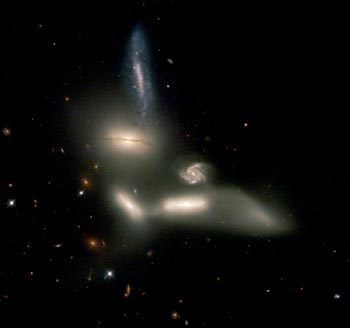The Hubble telescope managed to capture evidence of a group of galaxies in a slow dance of destruction that will last several billion years. These galaxies are so close together that the gravitational forces of each of them begin to tear stars apart and change their shape.
Avi Blizovsky

The Hubble telescope managed to capture evidence of a group of galaxies in a slow dance of destruction that will last several billion years. These galaxies are so close together that the gravitational forces of each of them begin to tear stars apart and change their shape.
These are the same mutual forces of attraction that can eventually cause them to merge into one galaxy. The name of this group, Seyfert's Sextet, reflects the size of the group as seen from Earth. However, only four galaxies participate in the dance. The small galaxy showing us its beautiful arm spiral (center) is a background galaxy almost five times as far away from us as the other four. Only a random angle makes her look like part of the group. The sixth member of the six is not a galaxy at all but a long tidal tail of stars (below right) torn from one of the galaxies. 1
Image Credit: NASA, J. English (U. Manitoba), S. Hunsberger, S. Zonak, J. Charlton, S. Gallagher (PSU), and L. Frattare (STScI)
